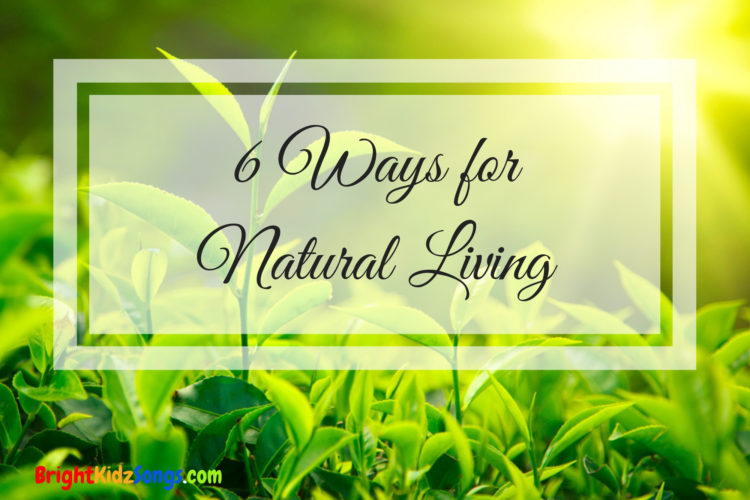
According to Natural Living enthusiast, Philip Robinson, “natural living is pursuing a positive and satisfying existence, in a style that respects and seeks to achieve harmony and balance with nature, ourselves, and the future”. Nina Nelson, another Natural Living enthusiast says, “a natural lifestyle is one that is focused on reducing toxic load, environmental stewardship, pursuing production versus consumption and seeking natural alternatives to conventional”.
Today, many people have become increasingly aware of the importance of taking care of nature and the consequences that could result if it is abused. Currently, there are many organizations, businesses, web sites, articles and people that are into natural living or natural health in one way or another. For those who are new into natural living or need some inspiration, here are some simple ways to practice Natural Living.
1. Cook from scratch
Pre-prepared foods tend to be full of unnecessary and even harmful chemicals to enhance their flavours, and are usually more expensive in the long run.
Therefore, to reduce toxic load, get whole food ingredients, a few simple recipes and cook from scratch. Whole foods are foods that are unprocessed and unrefined, or processed and refined as little as possible, before being consumed. Whole foods typically do not contain added salt, carbohydrates, or fat. Examples of whole foods include unpolished grains, beans, fruits, vegetables and non-homogenized dairy products.
Diets rich in whole and unrefined foods such as whole grains, dark green and yellow or orange-fleshed vegetables and fruits, legumes, nuts and seeds, contain high concentrations of antioxidant phenolics, fibers and numerous other phytochemicals that may be anti-cancer and protective against chronic diseases due to the synergistic effects of antioxidants and phytochemicals common in whole foods.
2. Use essential oils
Essential oils can be used to clean your house, make food tastier and even improve your health. Choose essential oils that are 100% pure.
However, here are some words of caution on the use of essential oils.
-
Many essential oils are designed exclusively for their aroma-therapeutic quality; these essential oils generally should not be applied directly to the skin in their undiluted form.
-
Essential oils can be aggressive toward rubbers and plastics, so care must be taken in choosing the correct handling equipment. Glass or ceramics are recommended to be used.
-
The use of essential oils in pregnancy is not recommended due to inadequate published evidence to demonstrate evidence of safety in pregnancy.
-
Essential oils should not be used with animals, as they possess extreme hepatoxicity and dermal toxicity for animals, especially for cats.
-
Essential oils should be blended with a vegetable-based carrier oil (as a base) before being applied. Common carrier oils include olive, almond, hazelnut and grapeseed. Only neutral oils should be used. Some essential oils, including many of the citrus peel oils, are photosensitizers, increasing the skin’s vulnerability to sunlight.
-
Many of the common essential oils, such as tea tree, lavender, and citrus oils, are classified as a Class 3 Flammable Liquid.
3. DIY
There are so many products that used to be trade secrets but can now be done DIY. Natural DIY products such as shampoo, soap bars, liquid cleaners, cleaning supplies and even car shampoos can now be easily made. One of the advantages of making your own products is that you can rest assured you and your family are using products free from harmful chemicals. You can find hundreds of natural DIY recipes online, in any good library, bookstores. Creating DIY natural products is one way we can reduce toxic load.
4. Reduce Waste with Reusable Alternatives
Instead of using disposable table napkins, disposable kitchen towels and diapers, use alternatives like washable cloth table napkins and washable cloth diapers instead. Use reusable cloth bags when you go shopping instead of the non-biodegradable plastic bags.
5. Switch To Nourishing Real Food
Swap processed food with nourishing real food.
-
Eat plain yogurt instead of the flavoured and sweetened ones.
-
Switch to free-range eggs which are full of nutrients compared to commercial eggs.
-
Eat peanut butter that is made from peanuts only and not those containing sugar, hydrogenated vegetable oils, additives and other unnecessary ingredients.
-
Use butter instead of margarine because butter is an excellent source of Vitamins A, D, E and K and there are no toxic metals or trans-fat found in butter. Though butter is a dairy product, it is easy to digest even for the most dairy-sensitive people because it doesn’t contain milk sugar or milk protein which are the main allergens found in dairy products.
-
Use coconut oil for cooking and baking. Commercial vegetable oils often oxidize due to heating or sitting on grocery shelves.
-
Get lots of nutrients by cooking with bones or real meat broth instead of using commercially packed ones in powder form.
-
Eat fresh vegetables and fish, instead of canned. Nowadays, almost any food can be found canned. But very few people know that most canned foods contain high levels of salt that elevates blood pressure and sulfur-based compounds that can cause respiratory problems in sensitive individuals.
-
Use natural sweeteners such as honey, sucanat, muscovado, pure maple syrup and for diabetics, stevia.
6. Grow food
Start a garden. You may start small with a few herbs such as basil or easy to grow vegetables such as tomatoes, green beans, squash and spinach. No matter how small, growing your own food helps in producing less waste, promotes a more natural lifestyle, and needless to say, saves you money.

